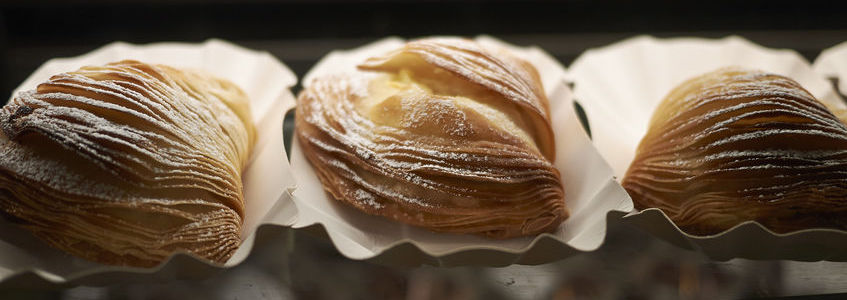
Sfogliatella napoletana (neapolitan pastry)
As bakers, keeping tabs on buzzworthy baked goods is always good for business. Not just for innovation’s sake but also to get an idea of the types of products consumers are looking for. Since our commercial baking community page, Baking Industry Professionals, is always discussing bakery trends, we thought we would choose a hot topic from the forum to highlight on our blog each month. This month, we are starting with Italian sfogliatelle. If you aren’t familiar with this baked good, it also goes by the name of the lobster tail due to the fact that its shape and delicious flaky layers resemble that of, well a lobster’s tail!
The name sfogliatella comes from the Italian “sfoglia”, which means thin sheet, and refers to this baked good’s delicate layers. While the word may be Italian, this bakery product is uniquely Neapolitan. You’ll find lobster tails in nearly every bakery in the vibrant city of Naples. However, you should be aware that there are two varieties of sfogliatelle: riccia and frolla. The latter requires less work from bakers, as it utilizes a shortcrust dough. The riccia, or ‘curly’, variety instead uses puff pastry, which is more time-consuming since it uses laminated dough.
Baking sfogliatelle
Despite their differences in dough, both types of sfogliatelle share the same filling, which is a combination of ricotta, semolina, sugar, eggs, cinnamon, candied fruit, and vanilla extract. Traditionally, lard is used in the preparation of this Neopolitan dessert, but margarine could also be substituted if necessary. Because it is an artisanal bakery product, working sfogliatella dough requires patience and steady hands to craft those lovely little ridges. Getting the perfect pastry may take several attempts, but if you’re not headed to Naples any time soon, we say why not try your hand at it?
Do you want to join in on the conversation? Become part of the Baking Industry Professionals page on LinkedIn or Facebook today!

